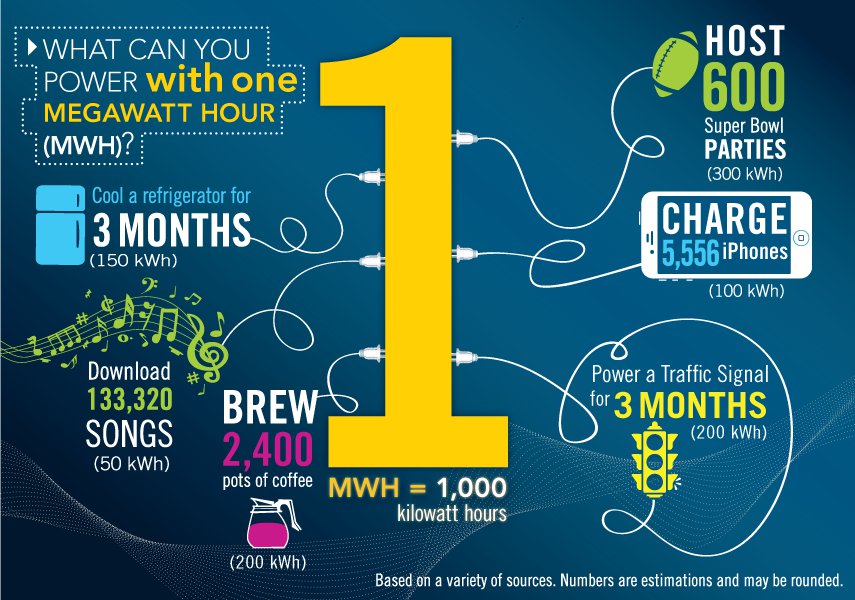Megawatt? A Powerful Question.
What's a megawatt and what can it do? We explain.
- October 20, 2016
- John Ollis

When I used to go to the store to get a 60-watt light bulb, it was a pretty simple experience. I could purchase any bulb that had “60 W” on the label and knew what I was getting and how bright it would be. Now when I go to the store and get a similar LED bulb, the label informs me that the 8 to 12-watt bulb has the same brightness as a 60-watt incandescent bulb. If both light bulbs produce the same amount of light, why do they use a different number of watts?
A watt is a measurement of power. In the case of an incandescent light bulb, it measures the electrical energy used to heat the bulb’s filament, which in turn produces light. An LED bulb requires less power to produce the same light, mostly because it produces a lot less heat. That’s why LED bulbs are more energy efficient than an incandescent light bulb.
You may be familiar with the power required to run other appliances like a washing machine (500 watts) or a water heater (5,000 watts). If you run that washing machine for an hour, it requires 500 watt-hours of energy. The energy requirements of all such appliances make up the usage in a household. In 2014, an average household in the Pacific Northwest used about 11 million watt-hours, or 11 megawatt-hours of energy over the year.
Commercial and industrial sectors often use more appliances that are more energy intensive than in homes. That same grocery store where I bought my light bulb might use around 2,500 megawatt-hours annually. To get a feel for the difference in usage, an average commercial customer uses almost seven times as much electricity in a year as a household. An average industrial customer uses nearly 40 times as much electricity in a year as a household.
How does this translate into the need for new power plants and energy efficiency?
Power plants generate electricity to meet demand. A 1-megawatt power plant could produce 8,760 megawatt-hours a year powering about 796 average regional households. If that same plant generated power 70 percent of the time, like some natural gas fueled power plants, it would produce about 6,132 megawatt-hours powering about 557 households. If that plant generated only 32 percent of the time, like a wind plant in the Columbia Gorge, it would produce 2,803 megawatt-hours powering about 254 households.
In the next 20 years, the Seventh Power Plan forecasts that regional demand might grow as much as 38.5 million megawatt-hours. One way to help meet that need might be to plan to build a few more power plants. However, an essential part of the Council’s
energy strategy is finding better ways to use the power we already produce, like changing that 60-watt incandescent to an LED lightbulb.
Join the conversation on LinkedIn.



